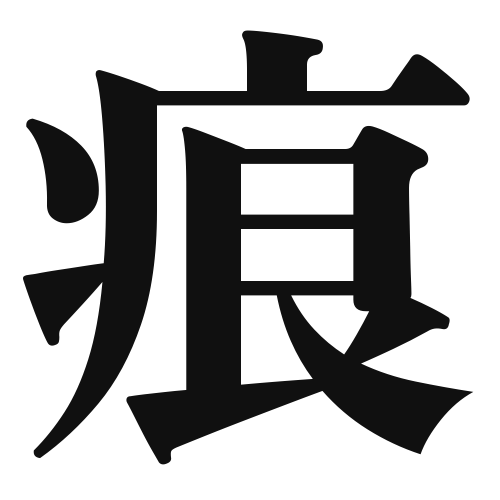1. Overview of Meaning
The kanji “痕” (kon) generally means “trace” or “mark.” It refers to the remnants or signs left behind after something has occurred, such as a scar or a footprint.
2. Formation and Radical
Formation of the Kanji: The kanji “痕” is a phono-semantic compound (形声文字), which combines the semantic component “疒” (related to sickness or disease) and the phonetic component “艮” (which provides the pronunciation).
Radical: The radical of “痕” is “疒,” which is associated with illness or conditions related to the body.
3. Examples of Usage
Common Words and Phrases: Some frequently used words that include “痕” are “傷痕” (shōkon – scar) and “足跡” (ashiato – footprint).
Example Sentence in Daily Conversation: “彼の腕には大きな傷痕がある。” (Kare no ude ni wa ōkina shōkon ga aru.) – “He has a large scar on his arm.”
4. Synonyms and Antonyms
Similar Kanji: A similar kanji is “跡” (ato), which also means “trace” or “mark,” but it is often used in the context of a location or a historical site, while “痕” is more about physical marks left on the body or objects.
Antonym: An antonym could be “新しい” (atarashii – new), as it represents something that is fresh or without any marks or traces.
5. Cultural and Historical Background
Relation to Japanese Culture: The concept of “痕” is significant in Japanese culture, particularly in literature and art, where scars and traces often symbolize past experiences and memories.
Proverbs and Idioms: An example of an idiom is “傷痕を隠す” (shōkon o kakusu), which means “to hide one’s scars,” often used metaphorically to refer to concealing past traumas or experiences.
